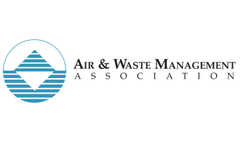Coal Fly Ash Articles & Analysis: Older
9 articles found
Along with bottom ash (BA) and flue gas desulfurization gypsum (FGD gypsum, or synthetic gypsum), fly ash is a coal combustion residual (CCRs) – a byproduct of coal-generated power and one of the largest streams of industrial waste in the US. The growing supply of fly ash ...
In 2008, approximately 4.1 million cubic meters of fly‐ash were released into the Emory River at a coal burning power plant in Kingston, Tennessee, United States. About 390,000 m3 of fly ash was not removed (hereafter residual ash) to avoid disturbing underlying legacy contamination from ...
Coal‐fly ash was released in unprecedented amounts (4.1x106 m3) into the Emory River from the Tennessee Valley Authority Kingston Fossil Plant on Watts Bar Reservoir in Tennessee. Tree swallows were exposed to ash‐related constituents at the ash release via their diet of emergent aquatic insects, whose larval ...
During two breeding seasons, we examined the composition of the diet of tree swallows (Tachycineta bicolor) at several colonies that were exposed to element contamination from a remediated coal fly ash spill to determine how variation in the diet influenced the risk of exposure to elements. ...
This innovative research study is based on utilisation of two solid waste materials, pulverised coal fly-ash and rice straw for manufacturing of laminate base paper. Fly-ash can prove to be a very good filler for laminate grade coloured base papers and other specialty papers where very high opacity is sought but ...
This paper outlines a transportation and market feasibility study performed in support of Western Greenbrier Co-Generation, LLC's participation in the first Department of Energy Clean Coal Initiative. Western Greenbrier Co-Generation, LLC is a unique company formed by three local city councils to support the development of clean coal technologies in Greenbrier ...
The leachability of heavy metals (copper, selenium and arsenic) from coal combustion fly ash as a function of load (under uni-axial stress of about 570 kPa, 1425 kPa, 2850 kPa and 5707 kPa) was assessed in a specially designed leaching device at leachant pH levels of 4, 6 and 8. The rate of release of Cu from fly ...
Encasement of utility cables and pipes in flowable fill monoliths formed in trenches requires the use of materials that satisfy both strength and contaminant leachability limits. Coal combustion ash is often readily available for use in flowable fill construction. ...
The aim of this project was to liberate Hg bound to fly ash and activated carbon after ACI and provide high-quality coal combustion products for use in construction materials. ...




